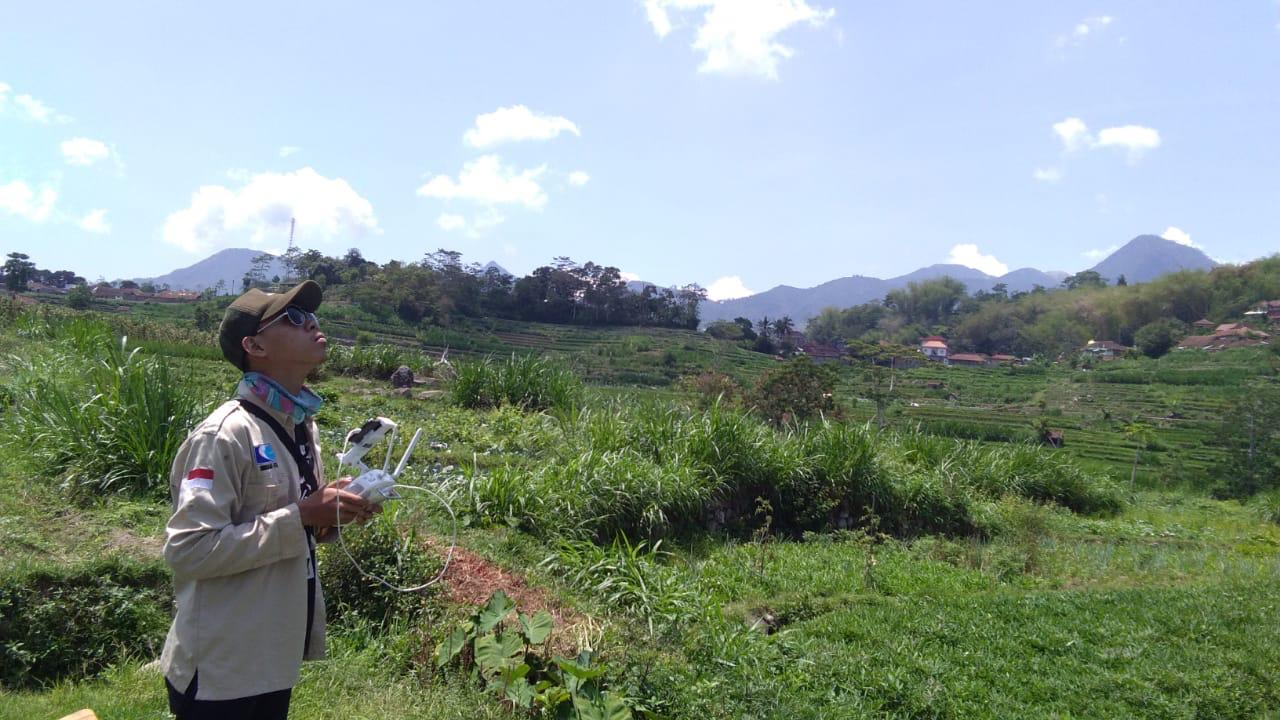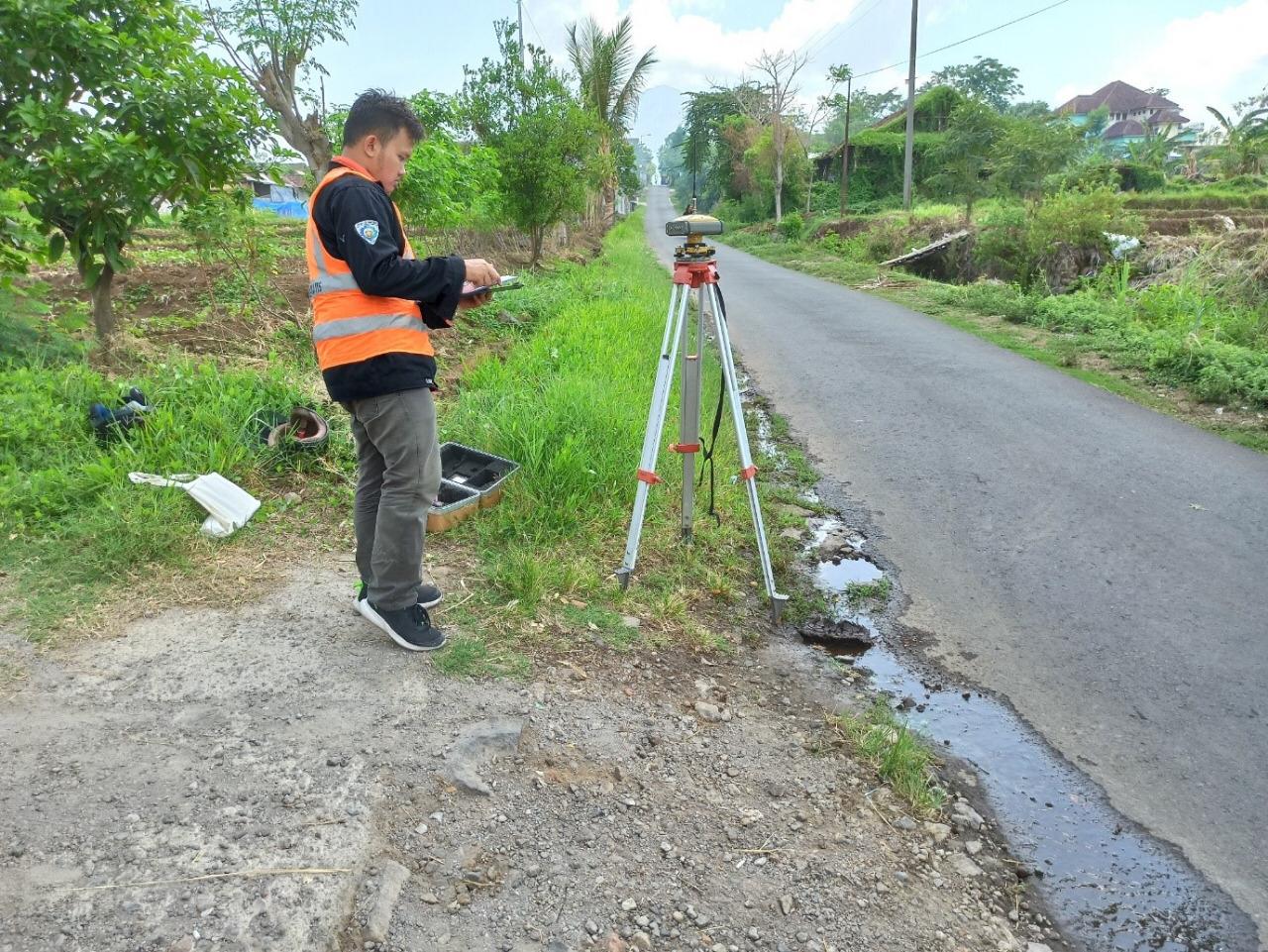ITS Lecturer Analyzing Rice Productivity for Food Security

Prof Dr Ir Bangun Muljo Sukojo DEA DESS doing position measurements, spectral values, and sampling in the field
ITS Campus, ITS News – Measurement of rice productivity as an effort to maintain food security is often through unmeasured observations, consequently the validity of the data is still insufficient. Seeing this, Sepuluh Nopember Institute of Technology (ITS) Faculty of Geomatics Engineering Department launched research analysis on agricultural productivity estimation using Insitu observation, growth phase and Autoregresif Integrated Moving Average (ARIMA).
Prof Dr Ir Bangun Muljo Sukojo DEA DESS as a research lecturer admitted, in estimating agricultural productivity, plantation, forestry, diversity, and biological resources can use the vegetation index. “This vegetation index is derived from the amount of chlorophyll rice crops,” Bangun explained.
According to Bangun, the higher chlorophyll in the rice crop, the higher the vegetation index. Through this vegetation index, it will be known to the level of rice productivity in producing rice.
In his research, the vegetation index is obtained by placing sensors on the satellite using electromagnetic waves that can monitor the amount of chlorophyll rice. “This Sensor is used during the growing phase and shot via satellite imagery,” he said

ITS Geomatics Engineering students who participated in the research were conducting position measurements, spectral values, and sampling
As for the growing rice phase, among others, the planting period is zero to one month, the vegetative period of one to two months, the reproduction period is two to three to four months, and the harvest period of three to four months. Each of these times will be shot to be validated using several approaches.
The approach used in this research is the insitu observation, i.e. observation of the geographical position of objects through GPS, vegetation index value with spectrometry, and sampling water and soil. “Samples were taken to know the salinity of pH, insecticide, water content, nutrients, water content, and others,” said the alumnus of the University of Paul Sabatier Toulouse 3, France.
Displayed wake, information obtained from the sample will be analyzed to determine the level of rice productivity. In addition, validation is also done by comparing the research result with the results of the autoreactivity Integrated Moving Average (ARIMA) method used in the previous productivity analysis.
This study took case studies in Bojonegoro Regency as the leading rice barn in East Java. In 2016, rice productivity in Bojonegoro district reached 1,050,000 tons of rice, thus obtaining a surplus of 750,000 tons of rice from the target production.

One of ITS Geomatics engineering students who participated in the research is conducting positioning measurements via GPS
Through the analysis that has been done, it is known that Bojonegoro District has a high vegetation index and good agricultural governance in the last 10 years. However, Bojonegoro district is rated to have low productivity due to external factors. “The low productivity of Bojonegoro district due to lack of farmers ‘ workforce,” said Bangun again.
The 1953-born lecturer admitted that, in addition to improving the accuracy of rice productivity data, this analysis is also judged to be more effective and efficient because it uses satellite imagery. “Later can be known to the area of rice paddy and the production of his,” he said.
On the other hand, advanced build, this analysis is rated more affordable, it does not require a lot of cost, time, and the number of human resources. “Especially for the estimation of rice production visually as the main data source of the statistics of ARIMA,” added.
He also added this analysis can reduce public dependence on the government. Because, according to Bangun, there will be a transfer of technology from the government to the community in the collection, processing, and presentation of the satellite data itself.
(vio/Anjani/ITS Public Relation Officer)
Related News
-
ITS Doctor Initiates World’s First Microexpression-Based Kinship Identification
ITS Campus, ITS News — Institut Teknologi Sepuluh Nopember (ITS) never stops producing outstanding doctoral graduates. Becoming the first
January 21, 2020 16:01 -
ITS Professor Supports Industrial Independence Based on Convection Heat Transfer
ITS Campus, ITS News — PIncreasingly rapid industrial development also demands the availability of energy to run company operations.
January 21, 2020 16:01 -
Supporting Conservation Activities, ITS Launches 1,000 Eco-School Movement Program
ITS Campus, ITS News — In commemoration of National Waste Awareness Day, the Institut Teknologi Sepuluh Nopember (ITS) through
January 21, 2020 16:01 -
ITS Lecturer Highlights Bullion Bank Benefits for Indonesia’s Gold Downstreaming
ITS Campus, ITS News — The launch of Indonesia’s first Bullion Bank or Gold Bank, Wednesday (26/2), marks Indonesia’s commitment
January 21, 2020 16:01
